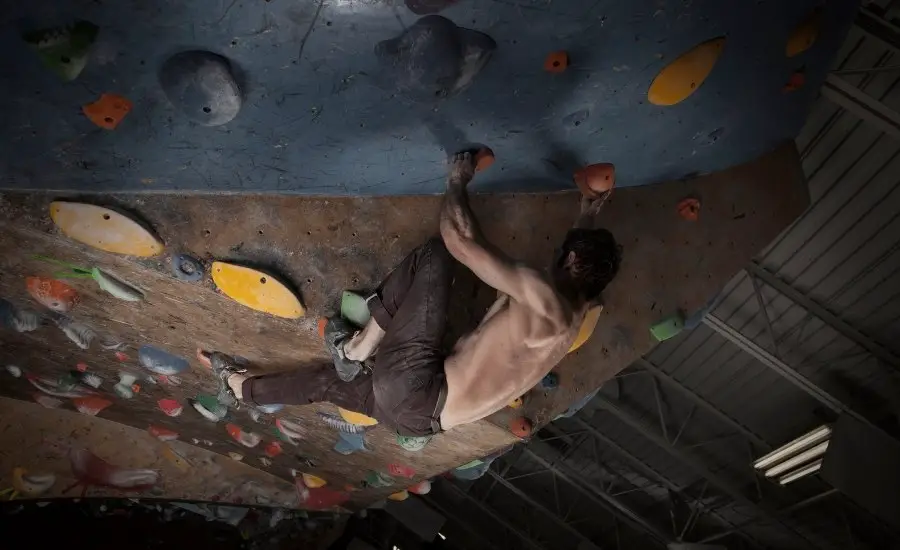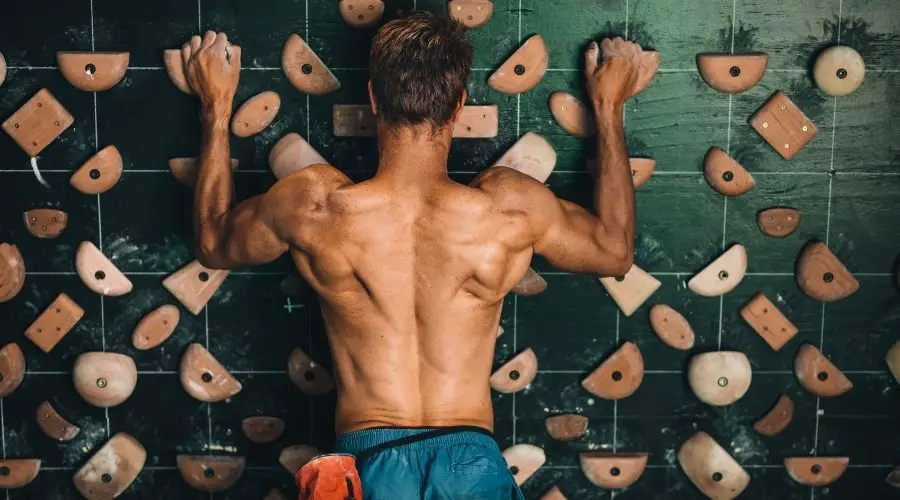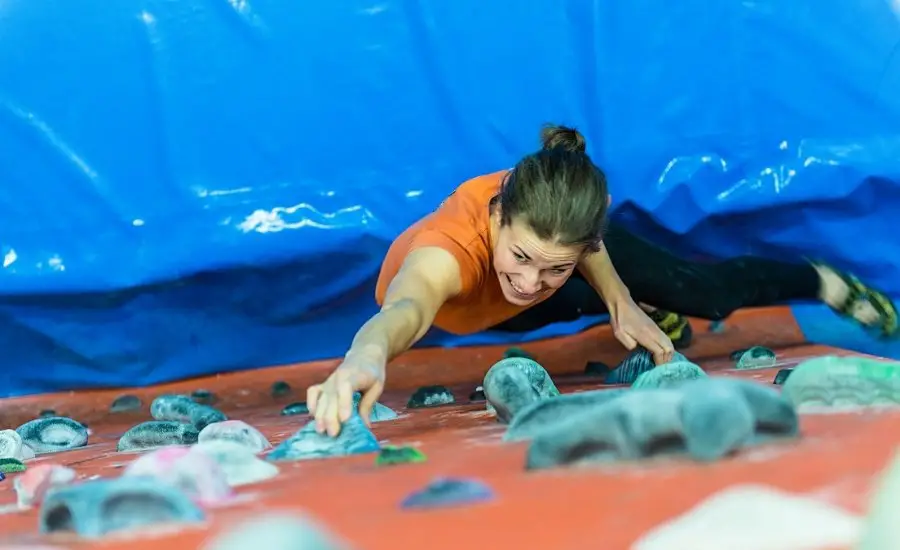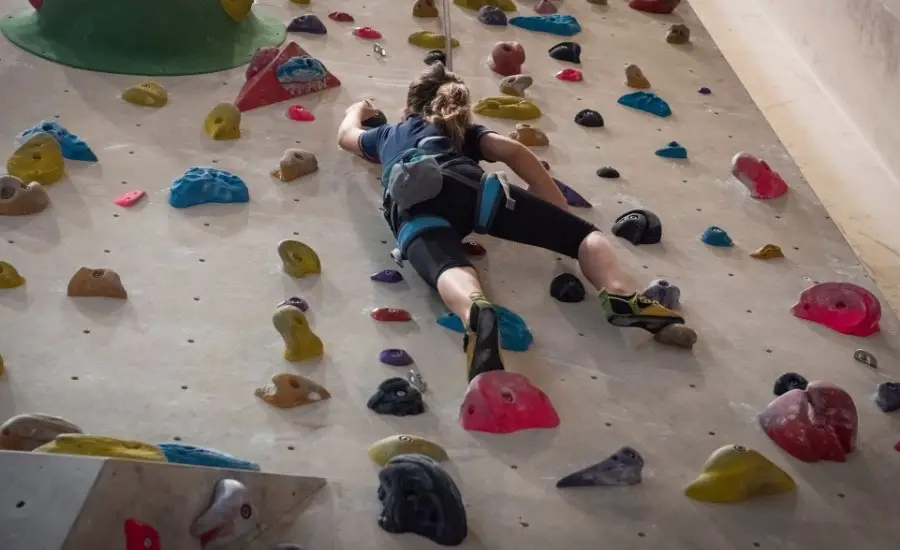Rock climbing has been gaining more and more popularity as a workout. It has been touted as one of the best full body workouts of all time by popular magazines and influencers. But what type of workout is it exactly? Is rock climbing better for cardio or strength training? After researching the topic for a few hours this is what I found out:
As a whole, rock climbing is a full-body exercise that improves physical strength, muscular endurance and cardiovascular performance. Rock climbing primarily increases muscular strength and endurance in beginners and cardiovascular performance in advanced climbers.
Understanding how rock climbing acts a workout is essential in understanding how it will benefit you. Although climbing is better for building muscular strength and endurance in beginners, you can optimize your climbing session to target cardio instead. This article will elaborate on and explain the different ways to design a climbing session to achieve your fitness goals.
If you are interested in seeing what the current prices are for the most popular rock climbing training aids, you can find them on Amazon by clicking here. Using the Amazon affiliate link above and/or other links in the article helps support this website.
Climbing as a Workout for Beginners vs Advanced Climbers

Above all else, climbing is a full body workout that has both cardio and muscular benefits. That being said, there is a discrepancy between the benefits beginners and advanced climbers receive from a session.
This difference stems from the lack of muscular strength in beginners. Beginners have not yet developed the muscular strength or endurance in their upper body essential to climbing. This is no fault to their own however.
Climbing heavily relies on muscles that are not typically used in the average person’s day to day life. A study published by the European Journal of Applied Physiology written by Feng Guo entitled “Changes in blood lactate and muscle activation in elite rock climbers during a 15-m speed climb” identified the main muscle groups used during speed climbing.
The study identified the main muscles activated during the climbing sessions to be (in order):
- Flexor digitorum superficialis (Fingers/Forearm)
- Biceps brachii, (Biceps)
- Latissimus dorsi (Lats)
Until beginners are able to build up significant amounts of strength in these muscles (primarily used in grip and pulling movements) the volume and intensity of their climbing sessions will be limited.
Advanced climbers have already built up that necessary grip and pulling strength. They are therefore able to climb harder and longer than beginners. This increase in climbing volume and intensity shifts the emphasis to that of cardio rather than muscular strength and endurance.

Rock Climbing for Strength Training
Progressively overloading the muscle by either intensity or volume is required to build strength. In weight lifting this can be accomplished by either increasing the weight or the amount of reps for the workout. In climbing this is accomplished by increasing the movement difficulty or time spent climbing.
Increasing the time spent climbing (volume) will provide muscular endurance benefits as well.
A study published by the Iranian journal of public health written by Lun Li entitled “Effects of Rock Climbing Exercise on Physical Fitness among College Students: A Review Article and Meta-analysis” examined the effects of climbing on the physical fitness of college students.
The study found that rock climbing was able to significantly improve the student’s muscular strength and endurance (handgrip, pedaling power, vertical jump, push-ups, pull-ups, and sit-ups). In addition to this, it significantly increased their sit-and-reach flexibility and increased their VO2max.
While the student’s VO2max was observed to have significantly improved (aerobic performance), their heart rate did not show significant improvement. Heart rate is a major measurement when determining cardiovascular fitness.
While many variables could be at play here, I speculate that this is due to the college student’s lack of experience in climbing. The primary benefits they experienced were that of muscular strength and endurance instead of cardio. This agrees with the expectations for beginner climbers as laid out in the previous section.
Climbing Session Design to Target Muscular Strength

Performing short and difficult movements after ample rest time will provide the maximum strength benefits during climbing.
To do this, pick a couple of challenging moves that you can do on the bouldering wall. Preferably they will be nearby each other. Perform one move and repeat it until you fail two times in a row. Immediately go to the other move and repeat that process. After you have failed each move twice, take at least a 5 minute rest before trying again.
The rest will allow your body to recover from the exertion and let you go again. I usually do this 3-5 times during sessions I am targeting strength.
Rock Climbing for Cardiovascular Exercise
Cardio exercise is characterized by the large energy demand caused by the increase in movement that leads to a higher heart rate and oxygen demand in the body. Full-body exercises (like climbing) require a large amount of energy to perform and are therefore great as cardio.
Note – Calories are the units used to measure this energy expenditure. Therefore, a greater energy demand means more calories will need to be used. More calories used means more weight loss.
A study published by the European Journal of Applied Physiology written by Eloisa Limonta entitled “Cardiovascular and metabolic responses during indoor climbing and laboratory cycling exercise in advanced and élite climbers” compared the cardiovascular demand of climbing to that of cycling in experienced climbers.

The study found that climbing produced a similar aerobic demand to that of cycling. It also found that elite climbers were able to climb more than the advanced climbers with similar oxygen demands but were unable to replicate this increase in workload during cycling.
Basically what this means is that the elite climber’s bodies were better acclimated to the demands of climbing and were able to do more work. This increase in work also increases the amount of energy (calories) needed to perform it. Therefore, assuming the same basal metabolic demands, the elite climbers will burn more calories than the advanced climbers over a given timeframe while climbing.
It is safe to assume that this workload increase will be even greater between beginner and elite climbers than it was for advanced climbers.
Climbing Session Design to Target Cardiovascular Performance
Repeating an easy route for multiple ascents in a row without a break will target cardiovascular endurance and burn more calories.

To do this, pick a route that is well below your maximum climbing performance. After sending the route, immediately start again without taking a break. Ideally you will climb the same route for about 3-5 minutes straight before needing a break. If the route is too difficult you will not be able to send it multiple times before getting pumped.
Preferably your chosen route will be a top rope route but bouldering routes can be used as well. If using a bouldering route, you will have to repeat it more times than the top rope route.
Doing this will keep your body moving for longer periods of time and in turn will apply additional stress to your cardiovascular system. I usually do this between 3-5 times a climbing session if I am targeting cardio.
The Bottom Line
Rock Climbing is an amazing full-body exercise that provides climbers with muscular strength, endurance, and cardiovascular benefits. Climbing will primarily build muscular strength and endurance in climbers until they have reached a base level of strength in their fingers, forearms, biceps, and lat muscle groups. As this strength and endurance is developed, climbing starts to primarily provide cardiovascular benefits.
